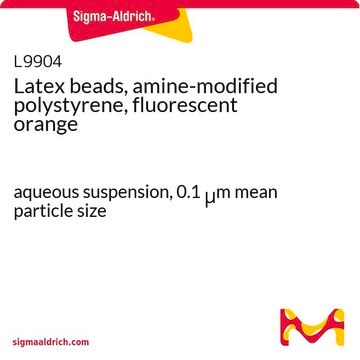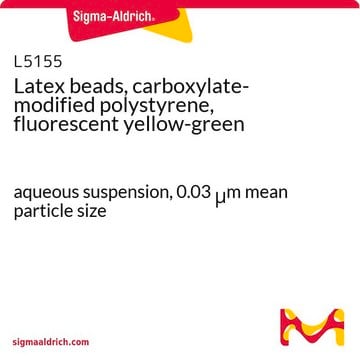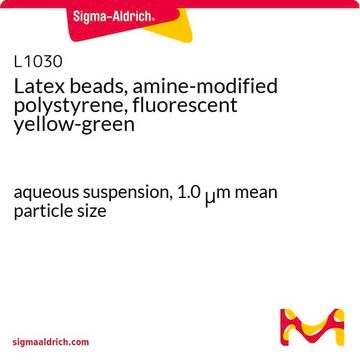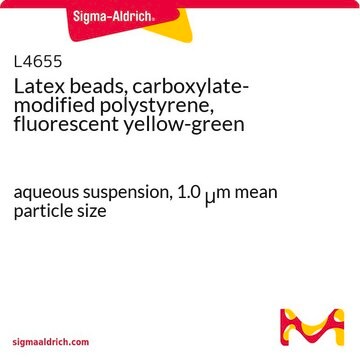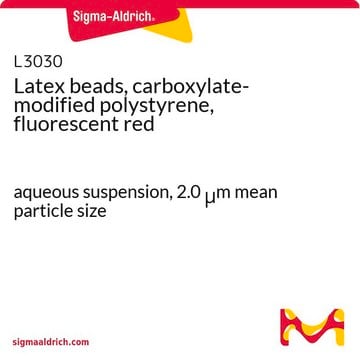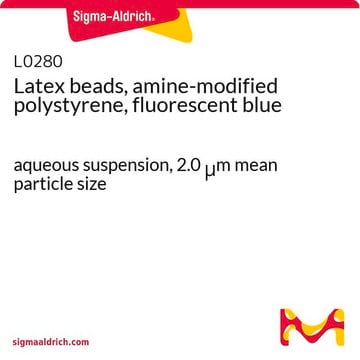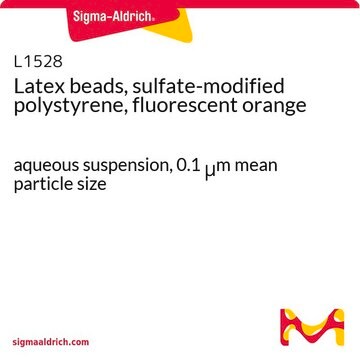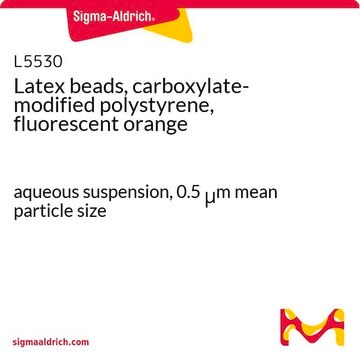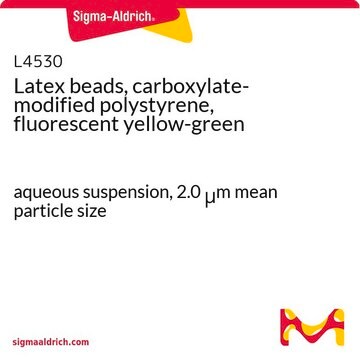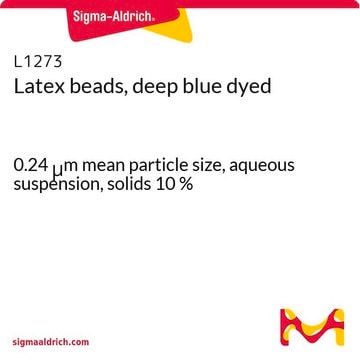These beads are prepared as a 2.5% or 2.5 g/100 mL suspension. which is 25mg/ml.
L0780
Latex beads, amine-modified polystyrene, fluorescent blue
aqueous suspension, 0.05 μm mean particle size
Wybierz wielkość
390,00 zł
Wybierz wielkość
About This Item
390,00 zł
Polecane produkty
Formularz
aqueous suspension
skład
Solids, 2.5%
metody
cell based assay: suitable
średnia wielkość cząstek
0.05 μm
fluorescencja
λex ~360 nm; λem ~420 nm
Zastosowanie
cell analysis
Szukasz podobnych produktów? Odwiedź Przewodnik dotyczący porównywania produktów
Zastosowanie
Działania biochem./fizjol.
Kod klasy składowania
10 - Combustible liquids
Klasa zagrożenia wodnego (WGK)
WGK 3
Temperatura zapłonu (°F)
Not applicable
Temperatura zapłonu (°C)
Not applicable
Wybierz jedną z najnowszych wersji:
Masz już ten produkt?
Dokumenty związane z niedawno zakupionymi produktami zostały zamieszczone w Bibliotece dokumentów.
Klienci oglądali również te produkty
-
Can you specify how much milligram of paricle in 1ml solution
1 answer-
Helpful?
-
-
What will be the concentration of plastics in 1ml? Can I add distilled water to make stock solution?
1 answer-
The amine-modified polystyrene latex beads are suspended in distilled water with a minimum amount of proprietary cationic surfactant (0.2%). The concentration of solids (plastics) is >/= 2.5%.
Helpful?
-
Active Filters
Nasz zespół naukowców ma doświadczenie we wszystkich obszarach badań, w tym w naukach przyrodniczych, materiałoznawstwie, syntezie chemicznej, chromatografii, analityce i wielu innych dziedzinach.
Skontaktuj się z zespołem ds. pomocy technicznej
